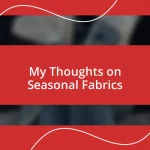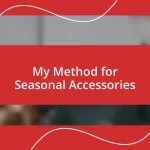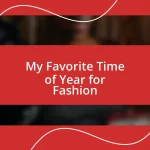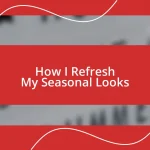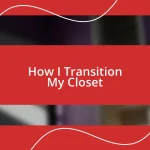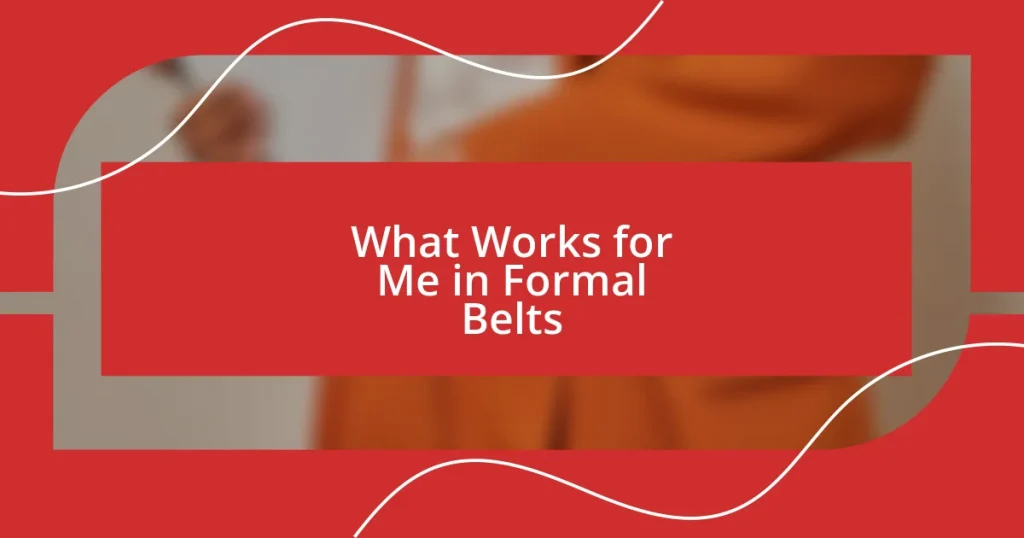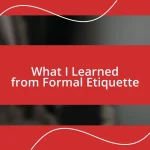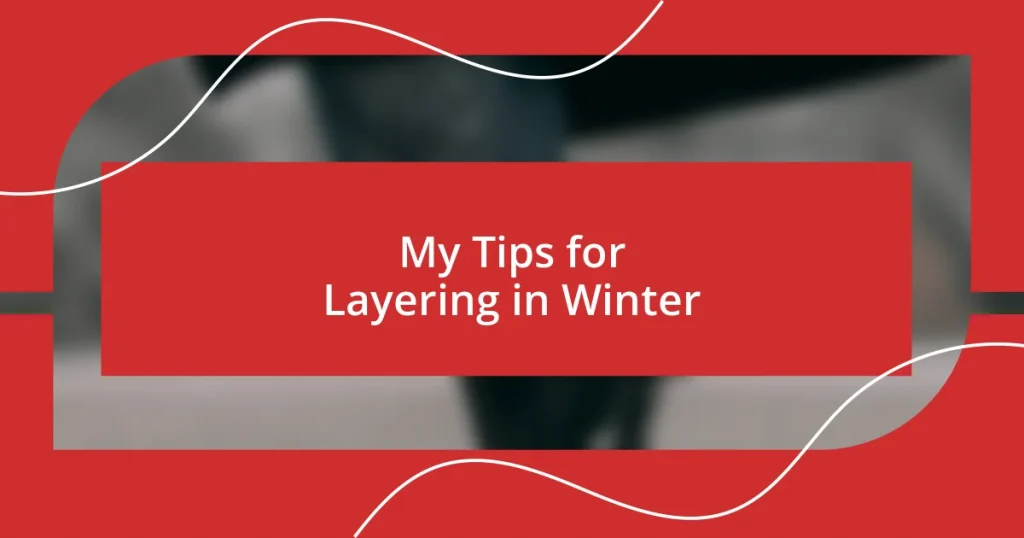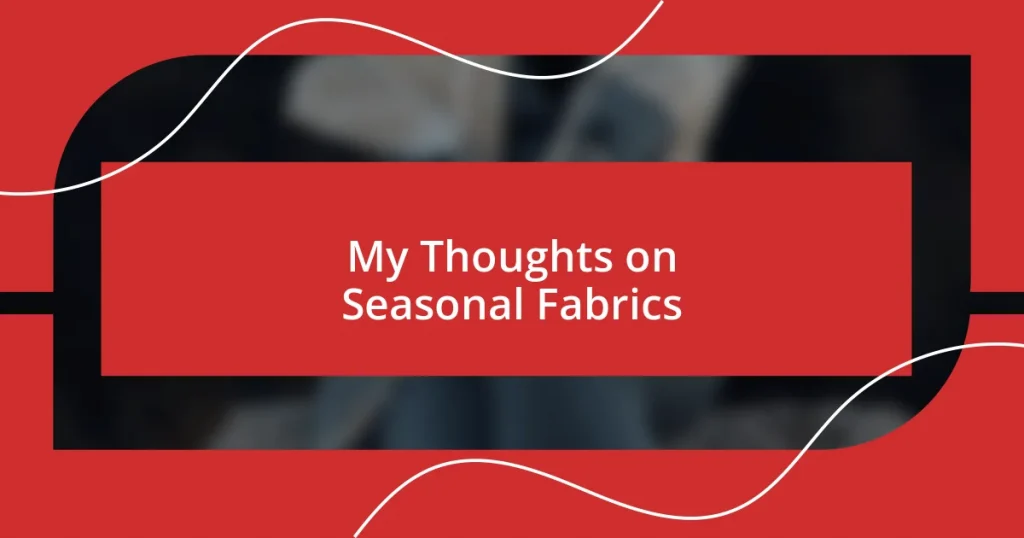Key takeaways:
- Choosing the right material, width, and color of a formal belt can enhance your overall appearance and confidence.
- Proper care and storage of belts are crucial for maintaining their longevity and appearance, including regular cleaning and using appropriate storage methods.
- Investing in quality brands like Salvatore Ferragamo and Hugo Boss ensures durability and style, significantly elevating your formal attire.
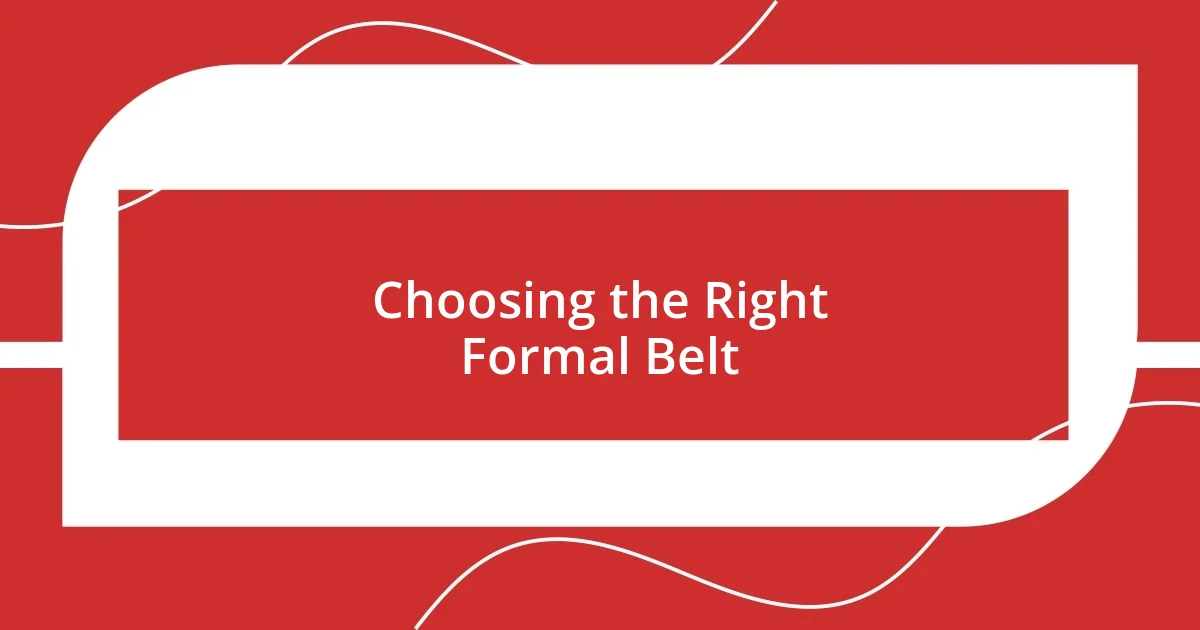
Choosing the Right Formal Belt
When it comes to selecting a formal belt, consider the material first. Leather has always been my go-to choice; it exudes sophistication and stands the test of time. I still remember the feeling of slipping on my first leather belt before a big presentation—it instantly boosted my confidence.
Next, focus on the width. A belt that’s too wide can overpower your frame, while one that’s too narrow might look flimsy against tailored trousers. I recall an instance when I wore a belt that was slightly too narrow for my suit; the overall look felt unbalanced, and that was a lesson I won’t forget!
Lastly, pay attention to the color. It should complement your outfit without drawing too much attention. I once wore a bright red belt to a formal event, thinking I’d add a pop of color, but instead, it completely clashed with the understated elegance of my attire. Would a more subtle hue have harmonized better? Definitely!
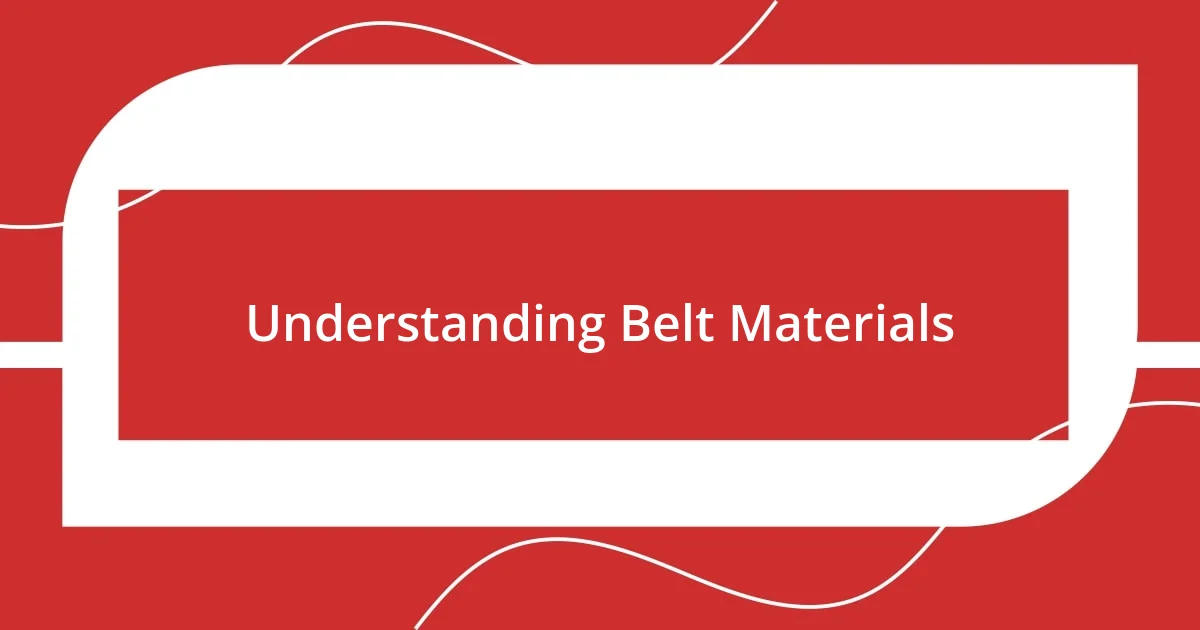
Understanding Belt Materials
Understanding the material of your belt can drastically influence both its function and style. Leather, as I mentioned, is a classic choice, known for its durability and timeless appeal. I recall purchasing my first leather belt; the way it aged gracefully over the years added character to not just the belt, but my wardrobe as well. It’s not just about aesthetics; leather provides the support necessary to keep your trousers in place, elevating your overall look.
Conversely, synthetic materials like polyester or nylon can offer a lighter, more affordable option, though they might lack the same refined appearance. One time, I decided to try a synthetic belt for a casual gathering, thinking it would hold up just as well. I ended up feeling a tad self-conscious, as it didn’t convey the same level of formality as my leather pieces. While they can be suitable for less formal settings, I wouldn’t rely on them for a big presentation.
Lastly, canvas belts have been a game-changer for me in casual settings, offering comfort while still looking put-together. I remember wearing a canvas belt on a relaxed Friday at work. The casual vibe allowed me to express my personality a bit more, and it was refreshing! Ultimately, choosing the right material boils down to the occasion and how you wish to present yourself.
| Material | Characteristics |
|---|---|
| Leather | Durable, sophisticated, ages well |
| Synthetic | Lightweight, affordable, less formal |
| Canvas | Comfortable, casual, expressive |
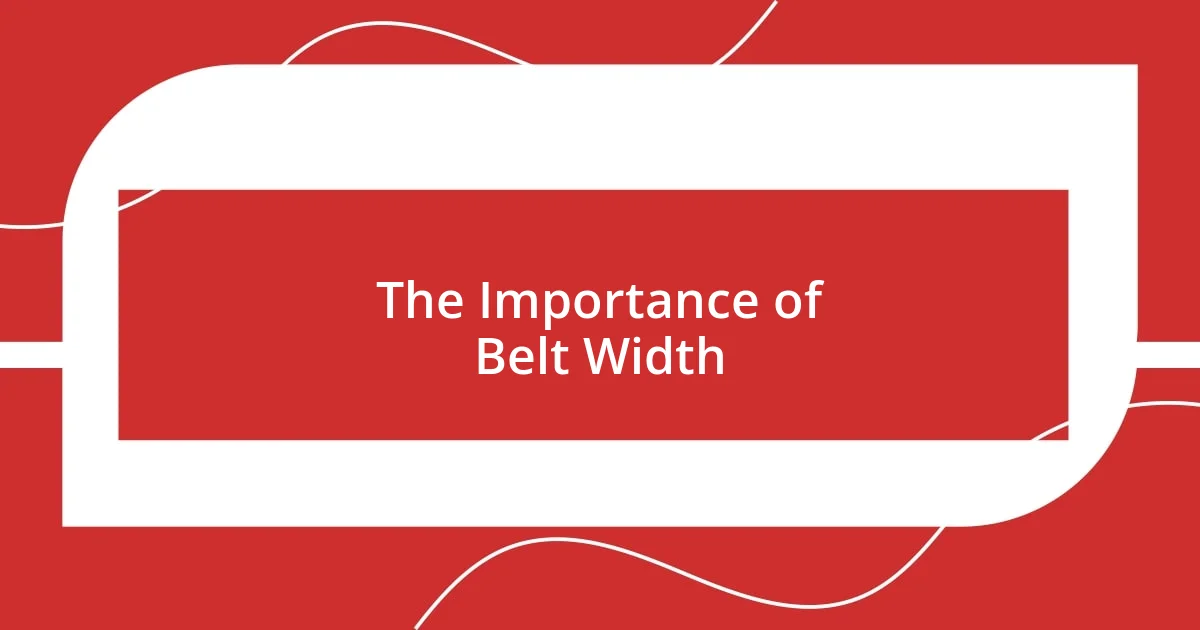
The Importance of Belt Width
Choosing the right belt width is critical in conveying a polished look. I’ve learned that the ideal width should align with the waistband of your trousers. When I wore a belt that was slightly wider than my tailored pants, it created an imbalance that made me feel bulky instead of refined. The right width, typically around 1.25 to 1.5 inches for formal settings, ensures that your belt doesn’t compete with your outfit but rather enhances it.
- A wider belt (1.75 inches and above) can accentuate a more rugged look but may be too overpowering for formal attire.
- A narrow belt (under 1 inch) tends to be less supportive and can look out of place with structured clothing.
- Choosing a mid-range option gives flexibility and works seamlessly with most formal trousers.
In the world of formal wear, believing in the power of subtlety has been a game-changer for me. For instance, I remember a day when I opted for a belt that was slightly too narrow, and the discomfort of self-doubt crept in throughout the day. The feedback I received from colleagues about my overall presentation further reinforced my understanding that the small details—like belt width—can collectively enhance or undermine our ensemble. Finding that balance in width transformed my confidence—it’s amazing how one small choice can set the tone for your entire outfit!
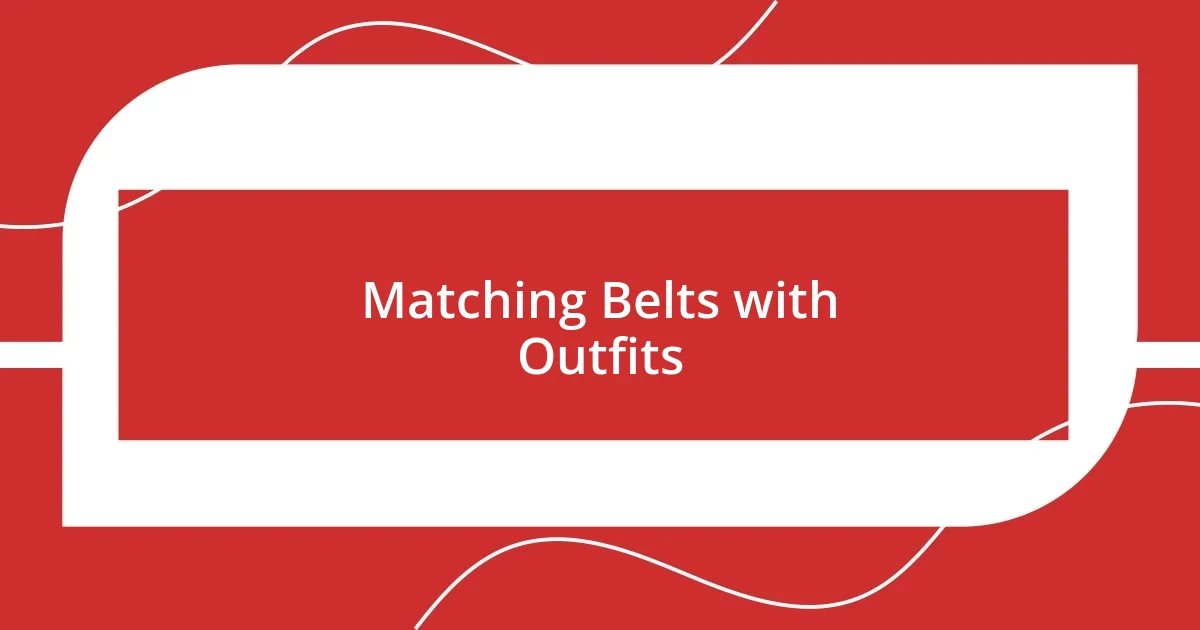
Matching Belts with Outfits
Matching a belt with an outfit can elevate your entire look in a meaningful way. I often find that selecting colors that complement the outfit is key. For instance, wearing a burgundy belt with a navy suit creates a rich contrast, making the ensemble pop. One evening, I wore a light gray blazer with a matching gray belt, but the outfit felt a bit bland. Adding a striking accessory like a patterned pocket square truly highlighted the first lesson I learned: a belt shouldn’t just match; it should enhance.
Texture plays a significant role in my decisions as well. I recall a time when I chose a woven leather belt with casual chinos. The textured belt added a layer of interest that seamlessly tied together my look for a weekend brunch with friends. I was amazed at how such a small detail could inspire compliments about my outfit. When I consider outfits for different occasions, I ask myself, “Does this belt add to the story I’m trying to tell?”
And then there’s the occasion itself. There’s a world of difference between a work presentation and a wedding. For a formal meeting, I favor monochromatic combinations to project professionalism, like a black suit with a sleek black leather belt. I remember a time when I took a risk with a vibrant colored belt at a friend’s wedding, and it turned heads for all the right reasons. The joy of stepping outside convention—but still feeling comfortable—was incredibly empowering. Ultimately, thinking deeply about how my belt choices interact with my outfit helps me express my intentions clearly, making each occasion a personal celebration of style.
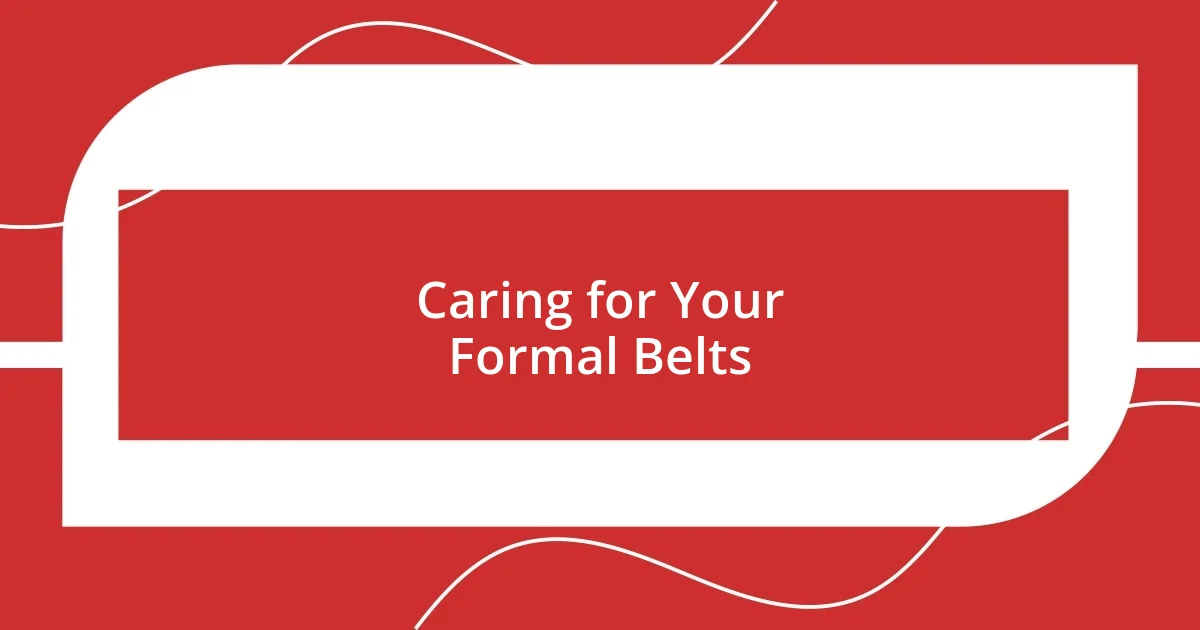
Caring for Your Formal Belts
Taking care of your formal belts is essential for maintaining their appearance and longevity. I’ve found that regular cleaning can make a significant difference. For instance, I once neglected my favorite leather belt and noticed that dirt and oils had begun to dull its shine. Now, I make it a point to wipe down my belts with a soft cloth after each wear, and I use leather conditioner every few months to keep them looking vibrant.
Storing your belts properly is equally important. I remember the time I tossed my belts into a drawer, only to find them tangled and creased later. A simple solution was to hang them on hooks or use a dedicated belt rack. It not only keeps them organized but also prevents unnecessary bending or damage, which can be a game-changer when you’re getting ready for a big event.
One thing that I always consider is the environment in which I store my belts. For example, I learned the hard way that humidity can weaken the leather. After discovering some moisture trying to compromise my belts, I now use silica gel packs in my storage area to control humidity levels. It’s those little adjustments that have truly helped my formal belts stand the test of time, ultimately allowing me to feel confident every time I wear them.
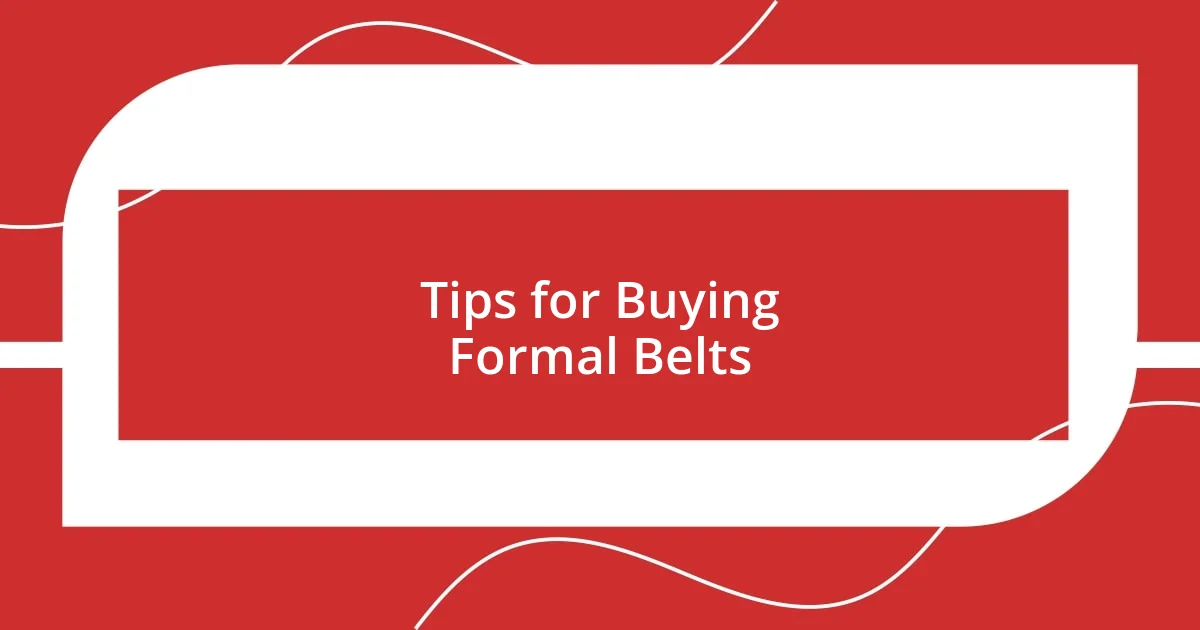
Tips for Buying Formal Belts
When it comes to buying formal belts, fit should be at the top of your checklist. I still remember the day I tried on a beautiful leather belt that looked fantastic on the rack but felt too tight once I fastened it. That experience taught me to always buy belts that fit comfortably, allowing for some wiggle room—not too loose, but not suffocating either. I personally recommend trying them on with the exact trousers you plan on wearing to ensure the right match.
Don’t overlook the buckle design, as it plays a vital role in the overall aesthetic. Last month, I purchased a stunning belt with a classic silver buckle for a business meeting. The simplicity of the buckle complemented my suit without overshadowing it. I often ask myself, “Will this buckle add a touch of elegance or distract from my look?” A well-chosen buckle can enhance your style without drawing too much attention away from your outfit.
Finally, consider durability when selecting your formal belt. I can’t count the number of times I’ve underestimated cheaper belts until one snapped during a crucial moment! Investing in quality materials, like genuine leather, has paid off for me. I always feel a sense of pride when I wear a belt that not only looks great but also stands the test of time—it’s a reminder that good choices often lead to greater confidence and ease in formal settings.
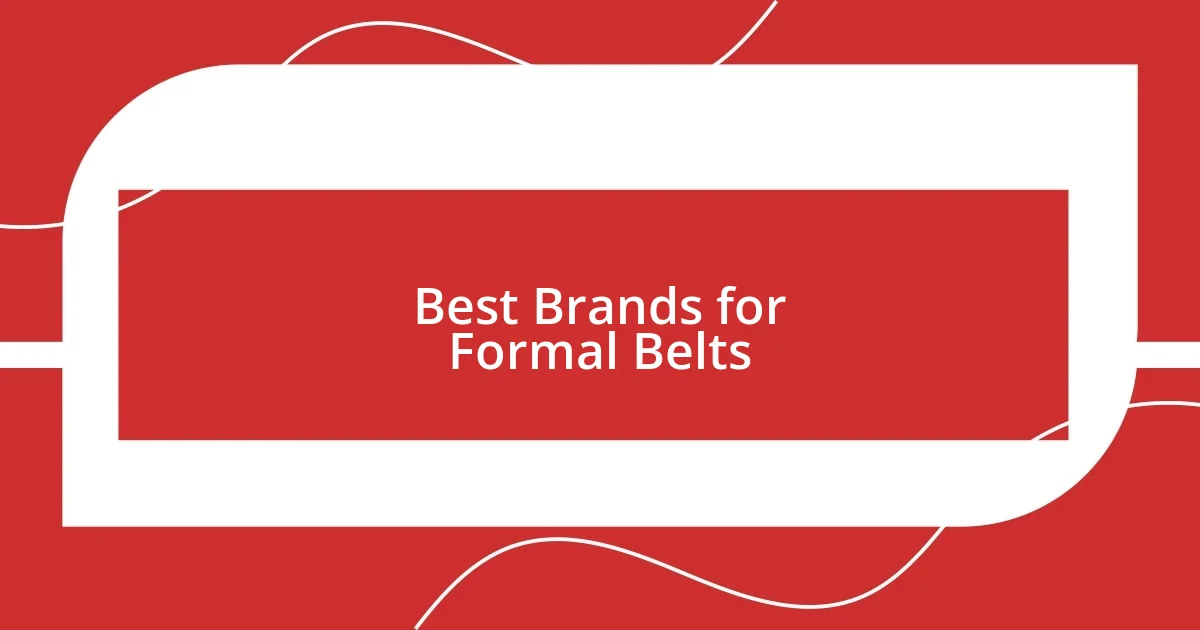
Best Brands for Formal Belts
When it comes to the best brands for formal belts, I’ve found that names like Salvatore Ferragamo and Hugo Boss consistently deliver high-quality products. The first time I slipped on a Ferragamo belt, I was struck by its craftsmanship—the smooth leather and elegant design made it feel like a true luxury item. It’s moments like these that make me appreciate investing in a brand with a solid reputation for durability and style.
Another brand that deserves a mention is Allen Edmonds. I can still recall wearing one of their leather belts during a family wedding; its rich color and impeccable finish garnered quite a few compliments. It’s fascinating how a well-chosen accessory can elevate an entire outfit, making you feel more confident. Allen Edmonds shines in this regard, blending classic style with a touch of modernity.
Lastly, I often turn to Tommy Hilfiger for versatile yet stylish options. There was a time when I needed a belt to transition from a business meeting to a dinner date. I grabbed a sleek, reversible Tommy Hilfiger belt that offered both a formal look and a relaxed vibe. It’s incredible how one piece can serve multiple purposes, saving both space and money while ensuring you always look put together.


